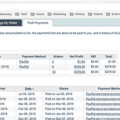The 2010s: A decade that changed the way agents work
The 2010s marked a tectonic shift in the way real estate agents conduct business.
It wasn’t the most tumultuous decade in real estate history. The 2000s have that distinction because of the record-setting crash that started in 2007. But looking at the way agents spend their days, few 10-year stretches have seen such change.
Here’s a look back:
Once upon a time – a decade ago – all the people who wanted to buy houses had to meet with real estate agents in person to sign disclosures with pens. Think brick-and-mortar offices and stick-or-click pens with a choice of blue or black ink. Today, most disclosures are signed electronically.
Agents went to the office more, back then, and many were required to do “desk time” at least once a week. That meant sitting in the front to answer the brokerage’s main telephone line and greet walk-in visitors, hoping to nab a client.
Yes, back then people cold-called brokerages looking for information on buying and selling a home. And, agents cold-called potential customers, as a way to generate leads.
“Who calls people anymore?” said David Michonski, who sold real estate for more than three decades and now is the CEO of Quigler, an app to track compliance for agents and clients. “If you don’t recognize a caller ID, you don’t answer it, ‘cause it’s all robo-callers.”
Today, agents tend to purchase leads from online sources such as Zillow and other real estate websites, he said. Clients tend to call agents on their cell phones after finding them on the internet, Michonski said.
“Prospecting has changed quite a bit,” he said.
For the most part, weekly office meetings for agents and their coworkers to collaborate are a thing of the past, said Michonski, who ran several brokerages.
“I used to insist that agents come into the office because I felt there was a synergy, a shared energy, and people bonded, but most brokerages have stopped doing that in the last 10 years,” Michonski said. “More agents now are sort of siloed, as opposed to being part of a unit.”
A decade ago, agents with customers looking at homes were more likely to be driving them around. That led to the distinction between a “listing car,” used to visit a potential seller with a marketing packet and a contract to be signed in-person with a pen, and a “showing car” that needed to be free of dog hair and Cheerios because it was used to ferry potential buyers to an array of properties.
Smartphones were new inventions, back in 2010, and people tended to rely on verbal directions, rather than using Google Maps or another GPS app. Part of the value agents brought to a transaction was a geographical knowledge of their market.
Today, agents are more likely to text an address to customers and meet them at the property. And, the buyers are more likely to have vetted available homes online and have a clearer idea of what they’re interested in seeing.
In 2010, the nation had just passed the zenith of the foreclosure crisis: 3 million families lost their homes in 2009. Only about 60% of Americans thought homeownership was a good idea, as opposed to about 92% today, as measured by Fannie Mae.
And, being a real estate agent was not seen as a fabulous life choice. Membership in the National Association of Realtors tumbled 30% between October 2006 and March of 2012.
Today, some of the shine is back on the real estate industry. NAR membership reached a record high of 1.41 million in October.
One problem agents didn’t have back then is a shortage of homes for sale. In May 2010, the seasonally adjusted “months supply” of homes for sale, meaning the time it would take to sell off the entire inventory, was 9.3 months.
In November, it was 3.9 months, the lowest ever recorded for that month. Most economists consider a 6-month supply to be a balanced market.






